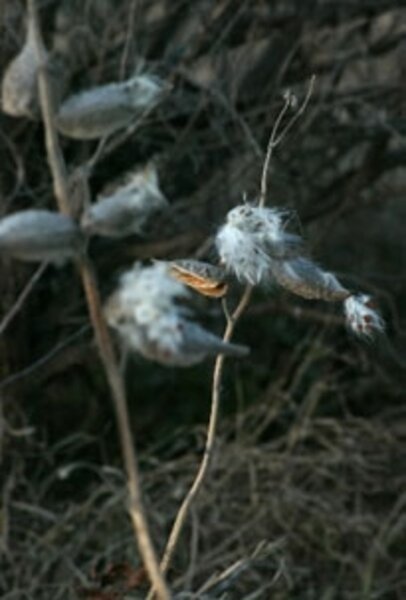The heroic milkweed
Loading...
Ralph Waldo Emerson wrote, “What is a weed? A plant whose virtues have not been discovered.” Farmers and gardeners often encounter milkweed as an unwelcome visitor whose roots and seeds dominate their landscape. But milkweed has provided often-unrecognized benefits to society during times of both war and peace.
Milkweed is named for its characteristic milky sap or latex. More than 100 species of milkweed call North America home. Common milkweed is concentrated east of the Rockies. It grows in fields, along roadways, and beside railway tracks.
Milkweed is sometimes called silkweed, a reference to the soft, glossy floss within each seed pod. Each strand of floss is attached to a seed, and the extensive proliferation of milkweed is fostered by parachutelike travels of floss and seeds on the wind.
There have been several campaigns to cultivate milkweed commercially. Thomas Edison and, later, scientists during World War II tried to create rubber from milkweed, but concentrations of latex proved too minute for practical commercial use.
In Salem, Mass., in the 1860s, milkweed floss was used as a mattress filling, and other parts of the plant went into making netting and socks.
Newspaper accounts from the 1940s excitedly described milkweed as a future commercial success, useful for clothing, insulation, paints, plastics, and wax.
Modern industry has looked at milkweed as a pest control product, skin moisturizer, and a hypoallergenic down substitute. But so far, milkweed industries have not yet experienced widespread success.
As a plant, milkweed has been controversial, sparking debate over whether it’s a weed or a desirable plant. But one thing is certain: Milkweed has an unquestionably heroic place in American history.
It was used as a kapok substitute during World War II. Kapok – a soft, cottony material from the kapok tree – was often used to fill “Mae West” life jackets during World War II.
But the supply of kapok was cut off by Japan’s control of Java, one of the main sources. Milkweed floss – waterproof and buoyant – was the best available substitute for kapok.
So wartime pamphlets encouraged children to gather milkweed. A brochure produced by the Soil Conservation Service for War Hemp Industries urged: “School children of America! Help save your father’s, brothers’, and neighbors’ lives by collecting milkweed pods.”
Canada and about 29 American states east of the Rockies were involved in the campaign, which furnished about 2 million pounds of milkweed floss to the armed services in one year.
The slogan “Two bags save one life” summed up the main mission. The floss harvested from two bags of milkweed pods would fill one life jacket.
Milkweed floss was also used to line flight suits. The pods were sent to the Petoskey Fairgrounds in Michigan to be dried and processed.
A 1944 issue of National Geographic magazine shows 90,000 pounds of milkweed drying there, “to buoy up fighting men’s life jackets.”
It’s been estimated that more than 11 million pounds of milkweed were collected by the end of World War II.
Because milkweed has been a friend to humanity in countless, little-known ways, I wonder: Is it time to remove the word “weed” from milkweed? Emerson, a New England optimist, would surely think so.





